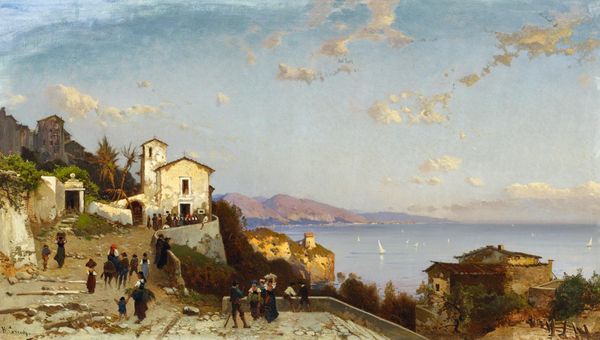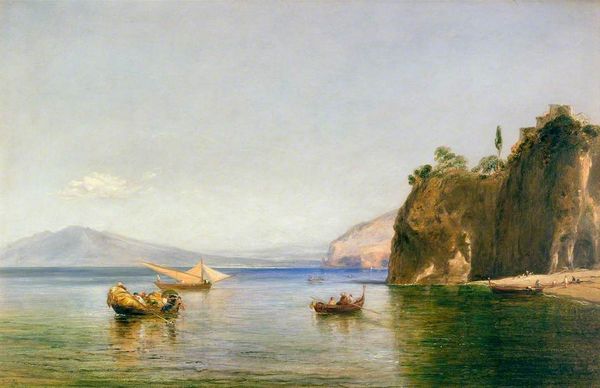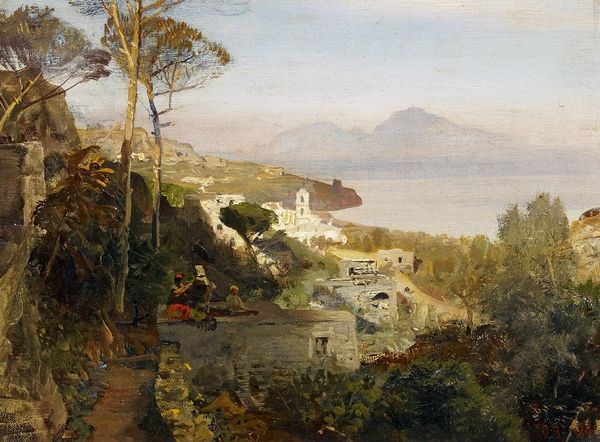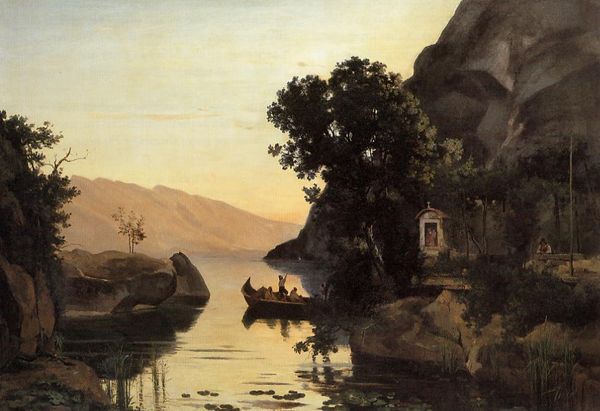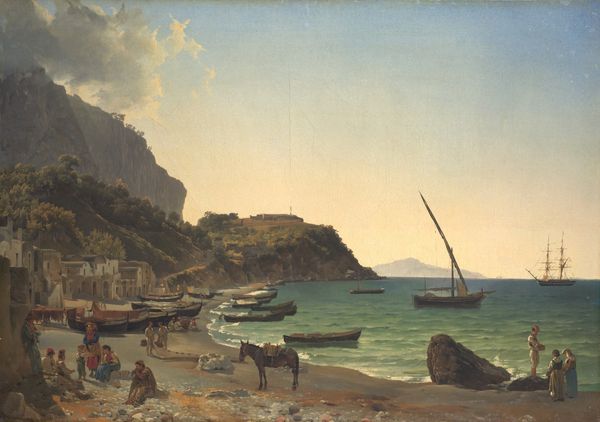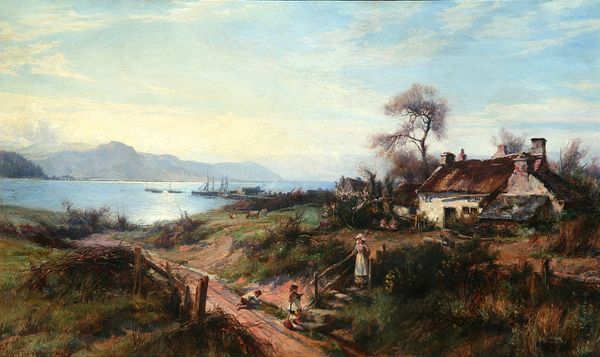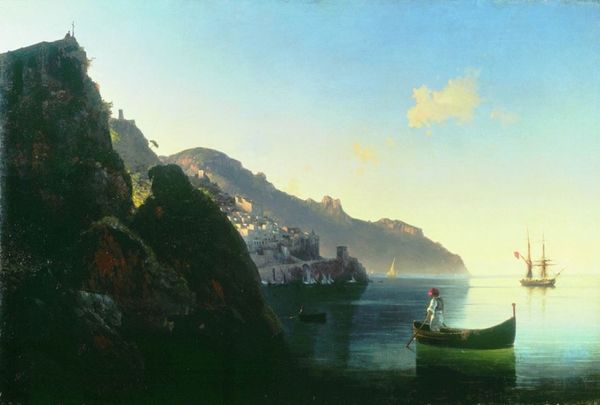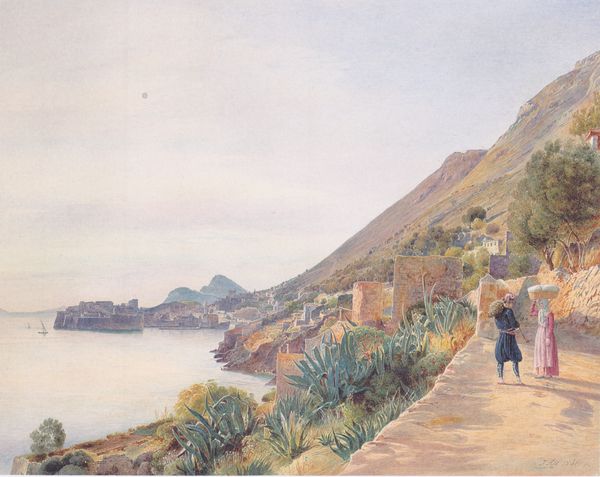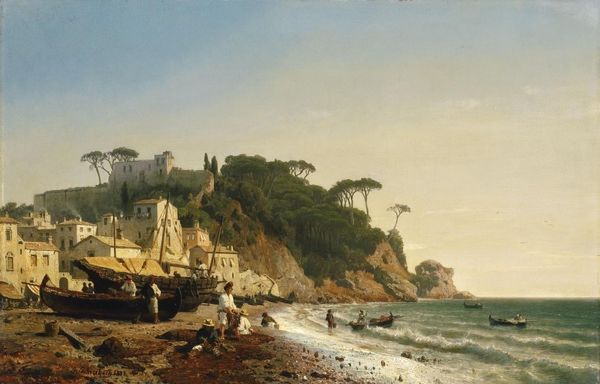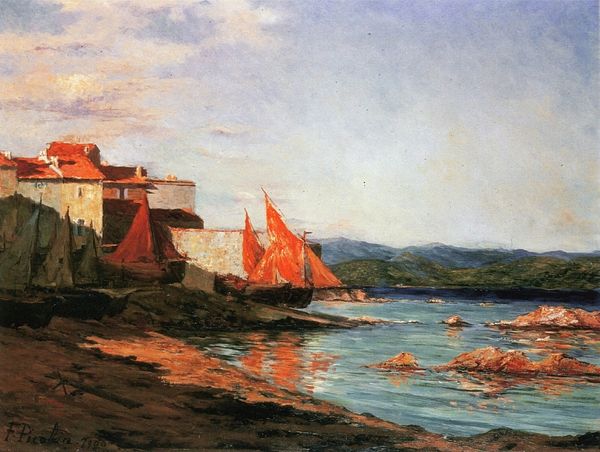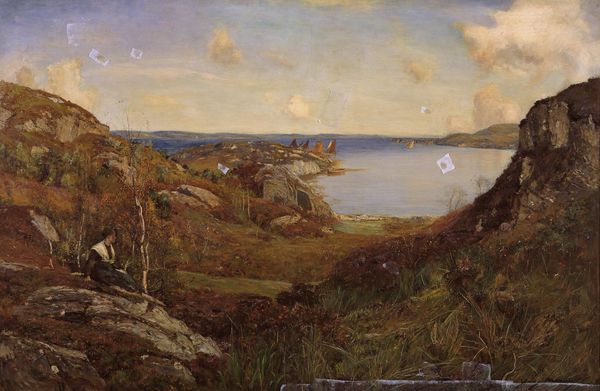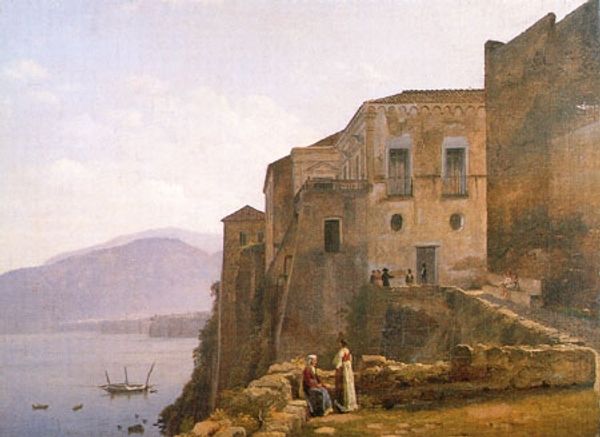
Copyright: Public domain
Curator: This is Nikolai Ge's "Sorrento," painted in 1869. A beautiful oil on canvas showcasing a coastal Italian landscape. Editor: It strikes me as quite serene, bathed in golden light. The texture of the cliffs seems almost palpable, you feel like you could touch it. Curator: Absolutely. Ge, although Russian, was deeply influenced by his travels in Europe, and his exposure to different aesthetic and political ideas. This painting is interesting if we see it in the light of that influence, right before the rise of radical revolutionary groups in Russia. Editor: Let's not overlook the labor implied, either. Look at the figure in the boat, almost subsumed by the scale of the landscape. The economy of Sorrento at the time would've greatly impacted his position relative to this grand cityscape. Curator: Precisely. The figure serves as an anchor, but also as a counterpoint to the imposing architecture and landscape. This work represents Ge’s departure from strictly academic painting to something more attuned to Realism and Romanticism. He engaged with the artistic debates around class and its representation, echoing the struggles of contemporary peasant populations across Europe and specifically within the Russian Empire. Editor: It is in line with labor struggles, especially with respect to this seaside community, in the sense that it gives the viewer access to something honest and immediate. I wonder, did the fishing community feel this romanticism and admiration reflected how hard they work everyday, or was it simply a facade for those with greater access and opportunity? Curator: These are great questions to think about in terms of Ge's artistic production at a time where debates over aesthetics intersect broader socio-political upheavals, even revolutionary momentum in his homeland. Editor: So many layers beneath the surface! Curator: Indeed. Seeing "Sorrento" in terms of broader theoretical and social contexts is really revelatory. Editor: Absolutely, appreciating the landscape and understanding its production is a crucial viewpoint.
Comments
No comments
Be the first to comment and join the conversation on the ultimate creative platform.
